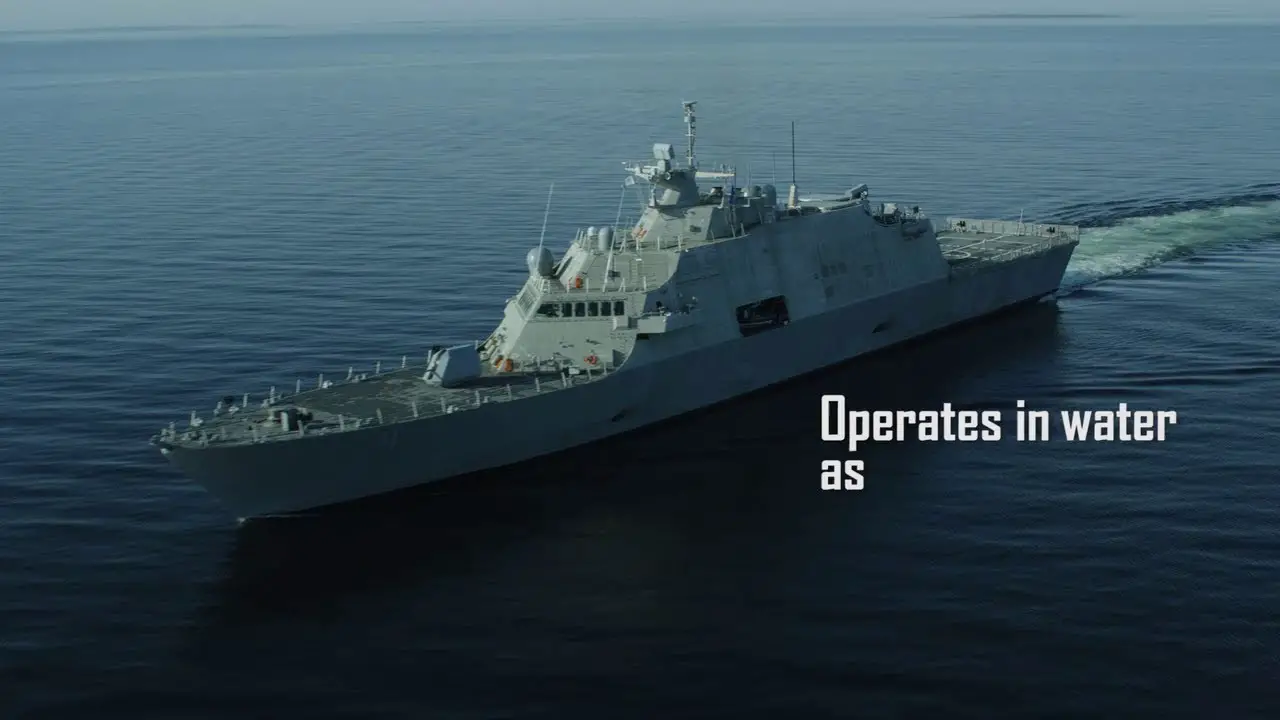Littoral Combat Ship 11, USS Sioux City, has completed Acceptance Trials and is now one step closer to joining the U.S. Navy fleet. Our Freedom-variant LCS is a lethal ship, designed to support mine countermeasures, anti-submarine warfare and surface warfare missions.
USS Sioux City (LCS-11) is a Freedom-class littoral combat ship of the United States Navy. It is the first ship named after Sioux City, the fourth-largest city in Iowa. The ceremonial “laying of the keel” was on 19 February 2014, at Marinette, Wisconsin. The ship was constructed by Fincantieri Marinette Marine and launched on 30 January 2016 after being christened by its sponsor, Mrs. Mary Winnefield. She will be commissioned at the United States Naval Academy in Annapolis, Maryland, sometime in 2018, after which she will be assigned to the Fifth Fleet in the Persian Gulf. She is assigned to Littoral Combat Ship Squadron TWO.
The Freedom class is one of two classes of the littoral combat ship program, built for the United States Navy. The Freedom class was proposed by Lockheed Martin as a contender for a fleet of small, multipurpose warships to operate in the littoral zone. Two ships were approved, to compete with the Independence-class design offered by General Dynamics and Austal for a construction contract of up to 55 vessels. Despite initial plans to only accept two of the Freedom and Independence variants, the U.S. Navy has since announced plans to order up to ten additional ships of each class, for a total twelve ships per class. Starting in 2019, ships of this class will be designated as fast frigates (FF) which will include increased firepower and heavier armor.
The ship is a semi-planing steel monohull with an aluminum superstructure. It is 377 feet (115 m) in length, displaces 3,500 metric tons (3,400 long tons), and can achieve 47 knots (87 km/h; 54 mph). The design incorporates a large reconfigurable seaframe to allow rapidly interchangeable mission modules, a flight deck with integrated helicopter launch, recovery and handling system and the capability to launch and recover boats (manned and unmanned) from both the stern and side.
The flight deck is one and a half times larger than that of a standard surface ship[clarification needed], and uses a Trigon traversing system to move helicopters in and out of the hangar. The ship has two ways to launch and recover various mission packages: a stern ramp and a starboard side door near the waterline. The mission module bay has a 3-axis crane for positioning modules or cargo.















